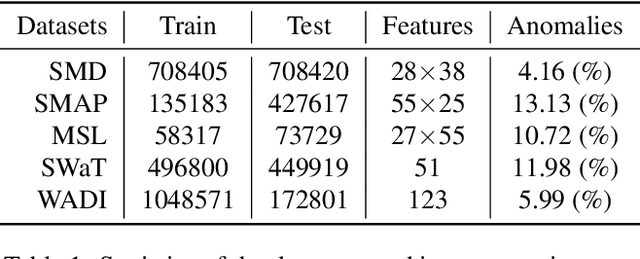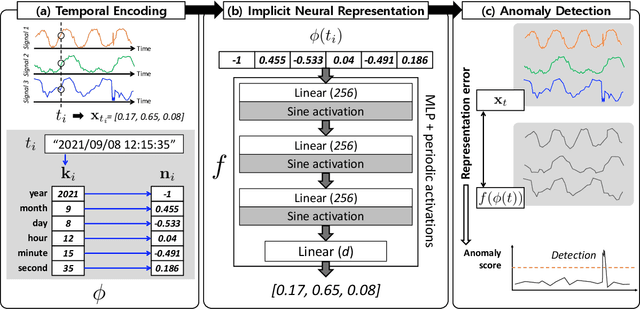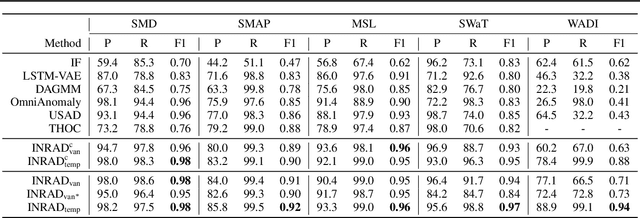Time-Series Anomaly Detection with Implicit Neural Representation
Paper and Code
Jan 28, 2022



Detecting anomalies in multivariate time-series data is essential in many real-world applications. Recently, various deep learning-based approaches have shown considerable improvements in time-series anomaly detection. However, existing methods still have several limitations, such as long training time due to their complex model designs or costly tuning procedures to find optimal hyperparameters (e.g., sliding window length) for a given dataset. In our paper, we propose a novel method called Implicit Neural Representation-based Anomaly Detection (INRAD). Specifically, we train a simple multi-layer perceptron that takes time as input and outputs corresponding values at that time. Then we utilize the representation error as an anomaly score for detecting anomalies. Experiments on five real-world datasets demonstrate that our proposed method outperforms other state-of-the-art methods in performance, training speed, and robustness.
 Add to Chrome
Add to Chrome Add to Firefox
Add to Firefox Add to Edge
Add to Edge